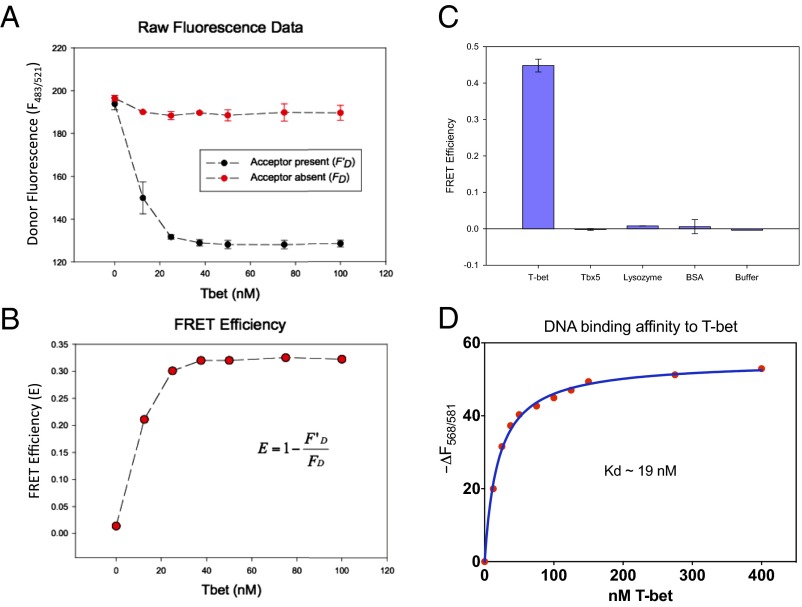Fig. 4.
FRET experiments confirm T-bet can synapse DNA in vitro. (A) Titration of FAM- and TAMRA-labeled DNA with T-bet. A strong FRET signal is observed when T-bet is present together with both donor- and acceptor-labeled DNA, but not in the absence of T-bet. (B) Relative FRET efficiency vs. T-bet concentration. (C) Fluorescently labeled DNA FRET efficiency induced by T-bet, TBX5, lysozyme, BSA, and buffer using 10 nM FAM-labeled DNA and 10 nM TAMRA-labeled DNA. Only T-bet produced a FRET signal. Even the monomeric T-bet homolog TBX5, which binds to the same consensus sequence, fails to do so. The concentrations of T-bet, TBX5, lysozyme, and BSA used in this experiment were 1.16 mM, 3.75 mM, 5.35 mM, and 2.5 mM, respectively. (D) The binding affinity of DNA to T-bet was determined by titrating T-bet to 1.25 nM TAMRA-DNA and observing the non-FRET decrease in the fluorescence of the T-bet bound TAMRA-DNA (SI Appendix, Supplementary Methods and Materials). The dissociation constant determined by this method was ∼19 nM.

